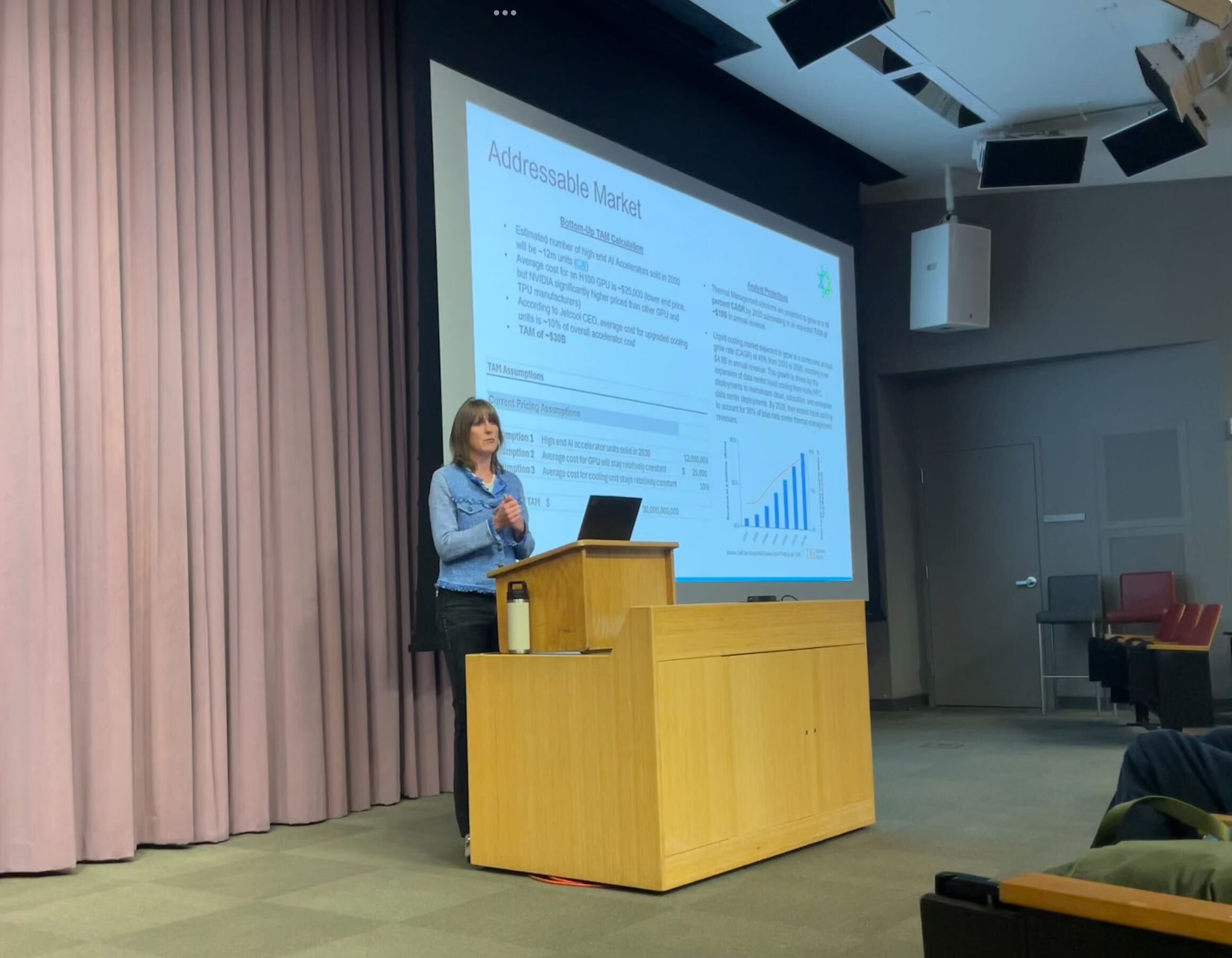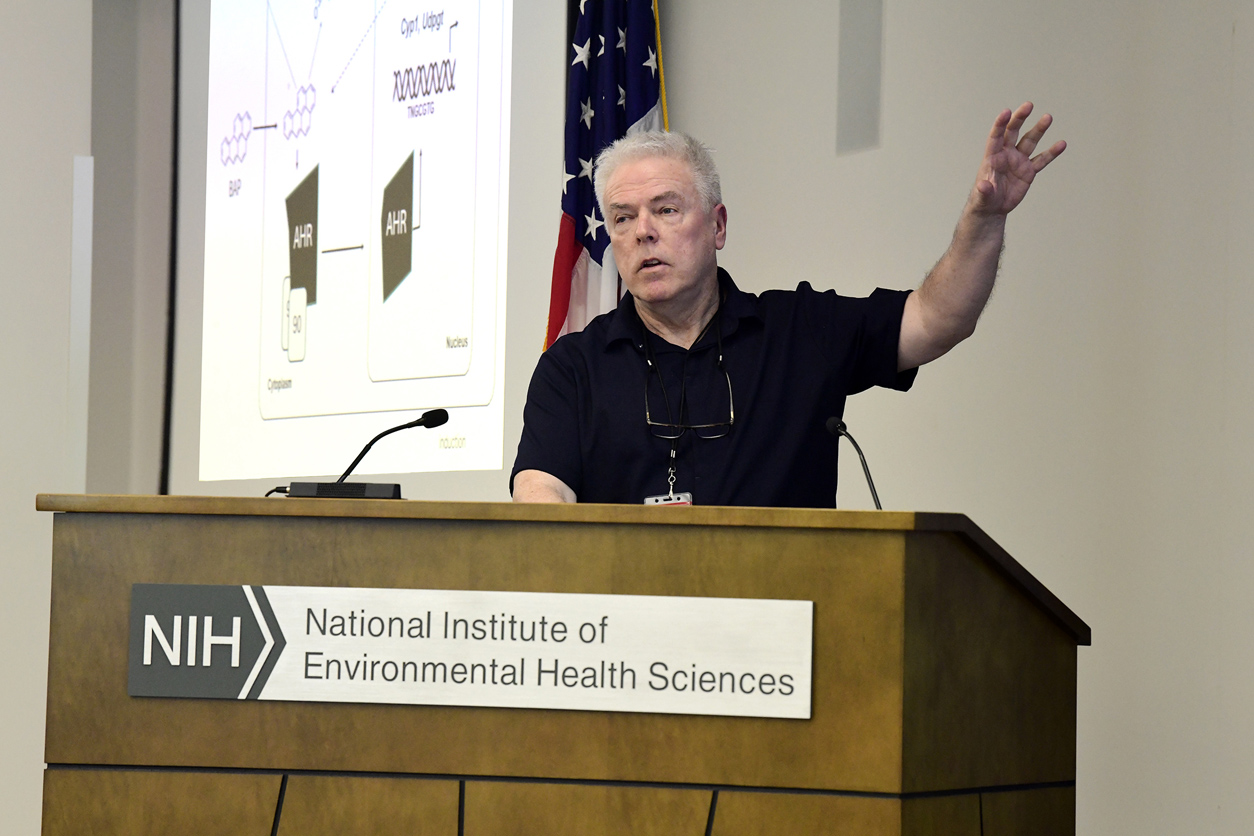Comprehensive Guide to Trump’s Executive Actions on ESG, DEI & Environmental Policy – The National Law Review

Report on Recent Executive Actions and Their Implications for Sustainable Development Goals
I. Social and Institutional Frameworks: Impacts on SDG 5, SDG 10, and SDG 16
A. Diversity, Equity, and Inclusion (DEI) Policies
A series of executive orders have been issued to terminate federal DEI programs, presenting significant challenges to the advancement of SDG 10 (Reduced Inequalities) and SDG 5 (Gender Equality).
- EO 14173 – Ending Illegal Discrimination and Restoring Merit-Based Opportunity: This order mandates the termination of all DEI-related preferences and programs, rescinds EO 11246 (Equal Employment Opportunity), and ceases OFCCP enforcement of affirmative action for federal contractors. This directly impacts frameworks designed to support SDG 10.
- EO 14151, EO 14168, EO 14281: These orders collectively aim to end government DEI programs and restore what is termed “biological truth” and “meritocracy,” actions that could reverse progress on SDG 5 and SDG 10.
- EO 14202 – Eradicating Anti-Christian Bias: Establishes a task force to review anti-Christian bias, focusing on a specific dimension of SDG 16 (Peace, Justice and Strong Institutions) concerning religious freedom.
B. Education Policies
Changes in education policy affect SDG 4 (Quality Education).
- EO 14190 – Ending Racial Indoctrination in K-12 Schooling: This order prohibits federal fund recipients from using certain ideologies related to race and sex and reestablishes the “1776 Commission.” This action influences the curriculum and principles of inclusivity central to SDG 4.
C. Federal Employment
Directives targeting the Foreign Service have implications for SDG 10 and SDG 16.
- Memo – Removing Discrimination and Discriminatory Equity Ideology From the Foreign Service: This memo removes DEI criteria from Foreign Service promotion and tenure decisions, altering the institutional mechanisms aimed at achieving equality within federal bodies, relevant to SDG 10.
II. Environmental, Energy, and Resource Management: Impacts on SDG 6, SDG 7, SDG 12, SDG 13, SDG 14, and SDG 15
A. Energy Policy and Climate Action
Multiple executive actions signal a significant policy shift away from renewable energy and climate mitigation, directly impacting SDG 7 (Affordable and Clean Energy) and SDG 13 (Climate Action).
- EO 14154 – Unleashing American Energy: Promotes fossil fuel exploration and revokes numerous prior climate-related executive orders. This policy is in direct opposition to the goals of reducing greenhouse gas emissions under SDG 13 and transitioning to clean energy under SDG 7.
- EO 14156 – Declaring a National Energy Emergency: Cites inadequate energy supply to expedite energy infrastructure projects, prioritizing energy security over sustainability objectives.
- Memo – Temporary Withdrawal of All Areas on the Outer Continental Shelf from Offshore Wind Leasing: Halts new offshore wind leasing, impeding the growth of renewable energy sources critical for achieving SDG 7.
- EO 14261 – Reinvigorating America’s Beautiful Clean Coal Industry: Designates coal as a “mineral” to receive benefits, encourages investment in coal production, and promotes coal exports, undermining efforts for SDG 13.
- EO 14262 – Strengthening the Reliability and Security of the United States Electric Grid: Focuses on grid reliability, potentially at the expense of integrating variable renewable energy sources, affecting the transition outlined in SDG 7.
B. Natural Resource Management and Conservation
Executive orders focused on resource extraction and land use have direct consequences for SDG 12 (Responsible Consumption and Production), SDG 14 (Life Below Water), and SDG 15 (Life on Land).
- EO 14153 – Unleashing Alaska’s Extraordinary Resource Potential: Mandates the expedition of permitting for resource development in Alaska, potentially impacting pristine ecosystems and biodiversity, which are key concerns of SDG 15.
- EO 14225 – Immediate Expansion of American Timber Production: Directs an increase in timber harvesting, which could affect sustainable forest management practices central to SDG 15.
- EO 14241 & EO 14285 – Immediate Measures to Increase American Mineral Production & Unleashing America’s Offshore Critical Minerals: These orders facilitate domestic and offshore mineral production to enhance national security, raising concerns about the environmental impacts on land and marine ecosystems (SDG 14 and SDG 15) and the principles of responsible production (SDG 12).
- Proclamation – Unleashing American Commercial Fishing in the Pacific: Eases restrictions on commercial fishing in the Pacific Remote Islands Marine National Monument, potentially impacting marine biodiversity and the sustainable use of marine resources as outlined in SDG 14.
- EO 14314 – Making America Beautiful Again by Improving Our National Parks: Revises policies for national parks to increase revenue and access, while revoking a memorandum on diversity and inclusion, affecting both conservation efforts (SDG 15) and equitable access.
C. Water Resource Management
Directives concerning water resources in California impact SDG 6 (Clean Water and Sanitation) and SDG 15 (Life on Land).
- Memo – Putting People over Fish: Directs the routing of water from the Sacramento-San Joaquin Delta, prioritizing human water supply over ecosystem needs, creating a conflict with the conservation goals of SDG 15.
- EO 14181 – Emergency Measures To Provide Water Resources in California: Mandates maximizing water delivery and expediting exemptions under the Endangered Species Act, which could negatively affect aquatic ecosystems and biodiversity (SDG 15).
III. Global Health and International Cooperation: Impacts on SDG 3 and SDG 17
A. International Health and Partnerships
Actions related to global health organizations and foreign aid directly affect SDG 3 (Good Health and Well-being) and SDG 17 (Partnerships for the Goals).
- EO 14155 – Withdrawing The United States From The World Health Organization: The withdrawal from the WHO and the pause of funding undermine the primary international body for global health cooperation, a critical component of SDG 3 and SDG 17.
- EO 14169 – Reevaluating and Realigning US Foreign Aid: Pauses new development assistance funds pending review, potentially disrupting programs that support numerous SDGs in developing nations and weakening international partnerships (SDG 17).
- EO 14199 – Withdrawing the United States from and Ending Funding to Certain United Nations Organizations: Terminates participation and funding for the UNHRC and UNRWA, and initiates a review of all international organization support, signaling a retreat from multilateral cooperation essential for SDG 17.
B. Domestic Health Policy
Domestic health policies have been enacted with implications for SDG 3.
- EO 14182 – Enforcing the Hyde Amendment: Revokes orders protecting access to reproductive healthcare, impacting targets within SDG 3 related to universal access to sexual and reproductive health-care services.
- EO 14273 & EO 14297 – Lowering Drug Prices: These orders aim to lower prescription drug costs for Americans, which aligns with the SDG 3 target of providing access to affordable essential medicines.
Analysis of Sustainable Development Goals in the Article
1. Which SDGs are addressed or connected to the issues highlighted in the article?
The article discusses a series of executive orders that have significant implications for various sectors, directly connecting to several Sustainable Development Goals (SDGs). The analysis reveals connections to the following SDGs:
- SDG 3: Good Health and Well-being: Addressed through executive orders concerning the withdrawal from the World Health Organization (WHO), policies on reproductive healthcare (Hyde Amendment), and measures to lower prescription drug prices.
- SDG 4: Quality Education: Connected via the executive order aimed at “Ending Racial Indoctrination in K-12 Schooling,” which seeks to influence educational content and reestablishes the “1776 Commission” to promote a specific type of patriotic education.
- SDG 5: Gender Equality: Relevant due to executive orders terminating Diversity, Equity, and Inclusion (DEI) programs and another titled “Defending Women from Gender Ideology Extremism,” which impact policies related to gender and equal opportunity in the federal government and for its contractors.
- SDG 6: Clean Water and Sanitation: Addressed by directives to manage water resources, such as routing water from the Sacramento-San Joaquin Delta and overriding activities impeding water delivery in California to address water supply issues.
- SDG 7: Affordable and Clean Energy: Directly impacted by numerous orders that declare a national energy emergency, promote fossil fuel exploration, eliminate the “EV mandate,” withdraw areas from offshore wind leasing, and support the coal industry, representing a significant shift in national energy policy away from renewables.
- SDG 10: Reduced Inequalities: Engaged through the rescission of DEI programs and affirmative action policies (Executive Order 11246). These orders aim to end what are described as “discriminatory and illegal preferences” and restore “merit-based opportunity,” thereby altering the federal approach to addressing inequality.
- SDG 13: Climate Action: Directly contradicted by the executive order “Unleashing American Energy,” which explicitly “revokes several prior climate-related EOs” and promotes fossil fuel exploration, signaling a reversal of national climate change policies.
- SDG 14: Life Below Water: Connected through actions that amend the management of the Pacific Remote Islands Marine National Monument to allow commercial fishing and promote offshore mineral exploration on the Outer Continental Shelf.
- SDG 15: Life on Land: Relevant due to orders that aim to increase American timber production, facilitate domestic mineral production, and revise policies for national parks, all of which affect the management and use of terrestrial ecosystems.
- SDG 16: Peace, Justice and Strong Institutions: Addressed by orders that alter federal enforcement priorities, such as pausing Foreign Corrupt Practices Act (FCPA) enforcement, and by terminating DEI programs within government agencies, which changes the institutional framework for promoting non-discrimination.
- SDG 17: Partnerships for the Goals: Impacted by orders to withdraw the U.S. from international bodies like the WHO and the UN Human Rights Council, end funding to certain UN organizations, and pause new awards of foreign aid, which fundamentally alters the nation’s engagement in global partnerships.
2. What specific targets under those SDGs can be identified based on the article’s content?
Based on the actions described in the article, several specific SDG targets are implicated, often by policies that run counter to the stated goals of the targets.
- Target 3.7 (Universal access to sexual and reproductive health-care services): The article mentions EO 14182, which enforces the Hyde Amendment to end federal funding for elective abortions and revokes previous orders aimed at protecting reproductive healthcare access. This directly impacts the provision and accessibility of reproductive health services.
- Target 3.d (Strengthen capacity for global health risks): EO 14155, which announces the U.S. withdrawal from the World Health Organization (WHO) and pauses funding, directly undermines this target by disengaging from the primary international body responsible for coordinating responses to global health emergencies.
- Target 4.7 (Education for sustainable development and global citizenship): EO 14190, “Ending Racial Indoctrination in K-12 Schooling,” and the reestablishment of the “1776 Commission” to promote “patriotic education” represent a specific intervention in educational curricula that can be analyzed in relation to this target’s goal of promoting appreciation of cultural diversity and global citizenship.
- Target 5.1 (End all forms of discrimination against all women and girls): The termination of DEI programs and the rescission of Executive Order 11246 (Equal Employment Opportunity) under EO 14173 alter the mechanisms designed to combat discrimination and promote equal opportunity, which are central to this target.
- Target 7.2 (Increase substantially the share of renewable energy): Several executive orders, such as EO 14154 (“Unleashing American Energy”) and the memo withdrawing areas from offshore wind leasing, actively work against this target by promoting fossil fuels and halting renewable energy projects.
- Target 10.3 (Ensure equal opportunity and reduce inequalities of outcome): EO 14173, which directs agencies to “terminate all discriminatory and illegal preferences, mandates, policies, programs,” including affirmative action for federal contractors, directly addresses the methods for achieving equal opportunity, albeit by removing existing frameworks designed for this purpose.
- Target 13.2 (Integrate climate change measures into national policies): The article explicitly states that EO 14154 “revokes several prior climate-related EOs (13990, 13992, 14008…).” This action is a direct reversal of the integration of climate change measures into national policy.
- Target 14.2 (Sustainably manage and protect marine and coastal ecosystems): The proclamation to unleash commercial fishing in the Pacific Remote Islands Marine National Monument and EO 14285 to unleash offshore critical minerals exploration directly affect the management and protection of marine ecosystems.
- Target 15.2 (Promote the implementation of sustainable management of all types of forests): EO 14225, which directs policy changes to “increase the production of timber, lumber, paper, bioenergy, and other wood products,” directly relates to forest management policies.
- Target 16.b (Promote and enforce non-discriminatory laws and policies): The termination of DEI programs and the directive for the Office of Federal Contract Compliance Programs to “cease promoting diversity” represent a fundamental shift in the enforcement of non-discriminatory policies.
- Target 17.16 (Enhance the global partnership for sustainable development): Actions such as withdrawing from the WHO (EO 14155), withdrawing from the UN Human Rights Council (EO 14199), and pausing foreign aid (EO 14169) are direct moves away from strengthening global partnerships.
3. Are there any indicators mentioned or implied in the article that can be used to measure progress towards the identified targets?
The article does not mention official SDG indicators, but it describes specific, measurable actions that can serve as de facto indicators of policy changes relative to the SDG targets.
- Indicator for SDG 3 & 17: The formal withdrawal of the U.S. from the World Health Organization and the cessation of funding are clear, measurable actions. The amount of funding paused or withdrawn would be a specific metric.
- Indicator for SDG 5 & 10: The number of federal DEI programs terminated and the formal rescission of Executive Order 11246 serve as direct indicators of the policy shift away from affirmative action and diversity initiatives.
- Indicator for SDG 7 & 13: The number of climate-related executive orders formally revoked is a quantifiable indicator. Other implied indicators include the number of new permits issued for fossil fuel exploration on federal lands and the cessation of new leasing for offshore wind projects.
- Indicator for SDG 16: The formal pause on new investigations under the Foreign Corrupt Practices Act (FCPA) for a period of 180 days is a specific, time-bound indicator of a change in anti-corruption enforcement.
- Indicator for SDG 17: The pause on new awards of foreign development assistance funds is a measurable indicator. The total value of aid affected could be tracked to measure the impact on international cooperation.
- Indicator for SDG 4: The reestablishment of the “1776 Commission” is a concrete action. The number of agencies directed to draft policy recommendations to enforce the EO on K-12 education could also serve as an indicator of implementation.
- Indicator for SDG 14 & 15: The volume of timber production, the number of permits for mineral exploration, and changes in regulations governing commercial fishing zones are all measurable outcomes of the executive orders mentioned.
4. Table of SDGs, Targets, and Indicators
| SDGs | Targets | Indicators (as implied by the article) |
|---|---|---|
| SDG 3: Good Health and Well-being | 3.7: Universal access to sexual and reproductive health-care services 3.d: Strengthen capacity for global health risks |
– Revocation of EOs protecting reproductive healthcare access (EO 14182) – Formal withdrawal from the World Health Organization (WHO) (EO 14155) |
| SDG 4: Quality Education | 4.7: Education for sustainable development and global citizenship | – Prohibition of specific ideologies in K-12 education (EO 14190) – Reestablishment of the “1776 Commission” |
| SDG 5: Gender Equality | 5.1: End all forms of discrimination against all women and girls | – Termination of government DEI programs (EO 14151) – Rescission of Executive Order 11246 (Equal Employment Opportunity) |
| SDG 7: Affordable and Clean Energy | 7.2: Increase substantially the share of renewable energy | – Elimination of the “EV mandate” (EO 14154) – Temporary withdrawal of Outer Continental Shelf from offshore wind leasing |
| SDG 10: Reduced Inequalities | 10.3: Ensure equal opportunity and reduce inequalities of outcome | – Termination of affirmative action policies for federal contractors (EO 14173) – Directive to cease promoting diversity by the Office of Federal Contract Compliance Programs |
| SDG 13: Climate Action | 13.2: Integrate climate change measures into national policies | – Revocation of multiple prior climate-related Executive Orders (e.g., 13990, 14008) |
| SDG 14: Life Below Water | 14.2: Sustainably manage and protect marine and coastal ecosystems | – Amendment of management of Pacific Remote Islands Marine National Monument to allow commercial fishing – Actions to facilitate offshore critical mineral exploration (EO 14285) |
| SDG 15: Life on Land | 15.2: Promote the implementation of sustainable management of all types of forests | – Directives to increase American timber production (EO 14225) |
| SDG 16: Peace, Justice and Strong Institutions | 16.b: Promote and enforce non-discriminatory laws and policies | – Pause on new Foreign Corrupt Practices Act (FCPA) enforcement investigations (EO 14209) |
| SDG 17: Partnerships for the Goals | 17.16: Enhance the global partnership for sustainable development | – Pause on new awards of foreign development assistance funds (EO 14169) – Withdrawal from UN Human Rights Council (UNHRC) (EO 14199) |
Source: natlawreview.com

What is Your Reaction?
 Like
0
Like
0
 Dislike
0
Dislike
0
 Love
0
Love
0
 Funny
0
Funny
0
 Angry
0
Angry
0
 Sad
0
Sad
0
 Wow
0
Wow
0














































































